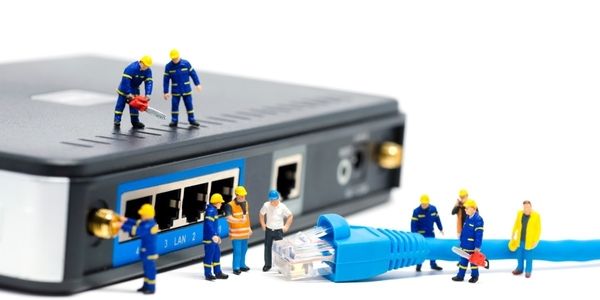Whether you work from home or casually surf the net in your spare time, problems with your internet are enraging. If you don’t come from a tech background, it can be utterly overwhelming. Where do you even start trying to fix the problem? Before you pick up the phone and hire a professional, check through this list.
These are all common internet problems that have relatively simple solutions. Follow these instructions to diagnose the problem and improve your online experience infinitely.

1. No Connection
If you can’t get onto the internet at all then it could be a problem at any stage of the connection process. Fortunately, computers have in-built systems to help you figure out where the fault is.
- Locate the Problem
When you lose connection, you’ll get a pop-up box that asks if you want to troubleshoot the problem. The process takes you through each step of your network to try and identify where the problem is. If it’s an internal issue, it can usually fix it automatically.
- Restart Your Router
If the problem is with the router itself, your best bet is the famous ‘IT Guy’ trick – to turn it off and on again. This process restarts any settings that may be causing the fault, such as internal firewalls. Just remember to wait 10 seconds to give the device the chance to properly restart.
- Check for Local Network Issues
If you’re still having no luck then it’s likely a network issue that’s out of your control. Ring your Internet Service Provider (ISP) to check. Often they leave automated messages to highlight problems for customers, so you won’t have to deal with being on hold for ages.
No connection is obviously the most inconvenient of home internet problems, but it’s not the only one that can be enraging.
2. Slow Connection
Slow connection is always frustrating but it can be fatal for those of us who use their devices for gaming, streaming, and downloading. Buffering, lagging, and failed downloads are all common symptoms of a slow connection. Here’s how to speed it up.
- Reposition Router
Particularly if you live alone, relocating your router can make a big difference. The nearer you are, the stronger the signal, which will improve speed. However, it’s not a great option if you have multiple users – as it will likely lead to fights over who gets the optimum position!
- Switch WiFi Channels
WiFi routers are usually programmed to work on channels 1, 6, and 11 by default. Most people don’t realize there are other options out there. As these channels process the most traffic, they’re usually the slowest. You can use a WiFi channel scanner to identify the least-populated channel in your area.
- Stop Leeches
If you have unsecured WiFi, it’s possible other people are using it without your permission. This adds load to the router and slows down the signal strength for everyone. Make sure you have a strong password to avoid Leeches hopping onto your network.
3. Poor WiFi Range
If you live in a big house or have people using your network in lots of different rooms, you may struggle with your WiFi range. If you can’t get a connection in some part of your home then give these tips a try.
- Use a WiFi Booster
Also known as extenders/repeaters, these plug-in devices allow you to create a secondary hotspot in your house. If you place them where the signal is weak, they can pick up the existing network and boost it so it gives you a wider range.
- Get a Bigger Antennae
Generic antennas are usually the smallest possible to save manufacturers’ money. They usually provide a 4 dB gain. You can switch out these for one that’s 10”-15” that will add a 10dB gain and extend the range of your WiFi considerably.
- Update Router Firmware
Particularly with older routers, the problem can be with the firmware that runs the WiFi network. Some routers have an easy ‘upgrade’ button for you to manually reinstall the software. Older versions will require you to visit your manufacturer’s website and download the necessary files before upgrading.
4. All of the Above
If you’ve tried all of the above fixes and they still haven’t worked, it might be time to look at choosing an alternate internet provider. While your ISP might have been the best option when you signed-up, technology is always advancing and some companies fall behind the pack.
There’s also the issue that different providers excel in different areas around the country. For example, lots of people regard AT&T as the best provider in the USA. However, where I am – in Denver, Colorado – the best option is actually CenturyLink. In fact, AT&T doesn’t even make the top five. Be sure to take this into consideration when you’re doing your research looking for a new ISP.
Don’t Settle for Subpar Internet
It’s easy to get used to the little, frustrating quirks that our internet can throw at us. We quickly stop noticing how enraging it is and just accept these inconveniences as a part of life. However, the fact is that we’re in the 21st century and poor internet shouldn’t be something anyone has to suffer through.
Try these tricks and tips to improve your internet quality and get back to surfing the net with streamlined freedom.
